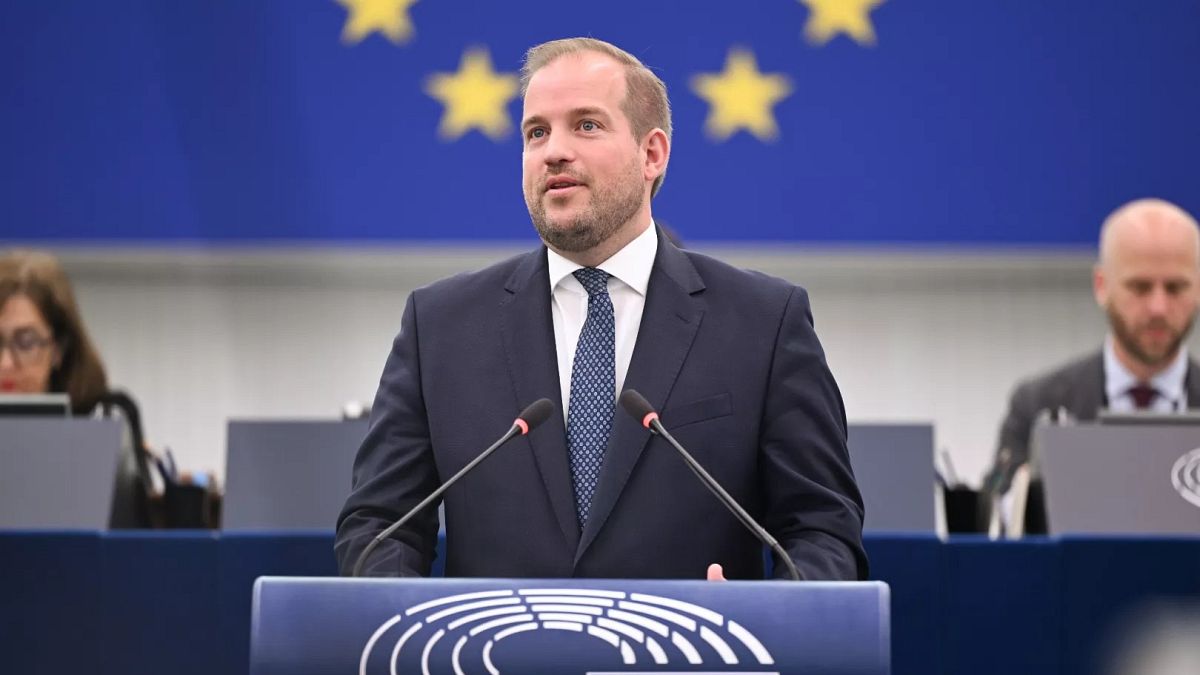Published on •Updated
The European Parliament voted on Tuesday overwhelmingly in favour of a directive that would criminalise the creation, possession and sharing of child sexual abuse material (CSAM) generated using artificial intelligence. The text also covers offences related to grooming, sextortion, and livestreamed abuse, while addressing legal definitions and age of consent issues across the EU.
The vote passed with 599 in favour, just two against, and 62 abstentions – an unusually broad consensus from the entire political spectrum for such a sensitive file.
“It will be treated in exactly the same as if it were real child abuse material,” Jeroen Lenaers (Netherlands/European People’s Party), the lawmaker leading the file, told Euronews. “Because we know that these models, first of all, they need to train on real child sexual abuse material and secondly, we see that using AI child sexual use material is a very small step to actually moving on to real child sexual abuse.”
Recent research by Helsinki-based non-profit Protect Children highlights a link between viewing abusive content and committing contact offences against children, even if a direct causal link has not been proven. According to the study, 52% of respondents said they feared viewing such material could lead them to commit abuse. Meanwhile, 44% said it made them consider seeking contact with a minor, and 37% admitted to having acted on those thoughts.
Lenaers told Euronews that AI-generated child abuse material has increased by over 1,000% in the past year alone.
The Parliament’s position was welcomed by both tech industry players and child protection advocates. In a joint statement, DotEurope, a Brussels based tech lobby group representing among others OpenAI, TikTok, Snapchat and Meta – and Eclag (European Child Sexual Abuse Legislation Advocacy Group) said: “We are happy to be joining forces for the first time to tackle the danger posed by AI for child sexual abuse at EU level. Hopefully, we can continue to find ways to work together to make online child sexual abuse history.”
However, Tuesday’s vote is not the final step. Negotiations will now begin between the Parliament, the Council of the EU, which represents national governments, and the European Commission. These “trilogue” talks will determine the final shape of the law.
The Council adopted its own position in December, but stopped short of including the criminalisation of AI-generated child abuse material — prompting strong calls from MEPs, industry and advocacy groups for ministers to align with Parliament.
Age of consent also proved divisive during the Council’s negotiations. A coalition of seven countries – Belgium, Finland, Ireland, Latvia, Luxembourg, Slovenia and Sweden – issued a joint statement warning that, while children who reach the age of sexual consent may legally agree to sexual acts, they remain especially vulnerable and need strong legal protection.
The proposed directive goes beyond AI imagery. It introduces a shared legal framework across the EU to combat online child abuse, with clear definitions of “grooming” and “sextortion” as crimes. It also seeks to outlaw the livestreaming of abusive acts, lift time limits for reporting sexual abuse, recognising that many victims come forward only years later, and ban so-called “paedophile handbooks”, which provide instructions on how to manipulate children and evade detection.
During the plenary debate, Commissioner for Home Affairs Magnus Brunner called for ambition and unity: “We cannot be ambitious enough. There is no more important priority than protecting our children.”
